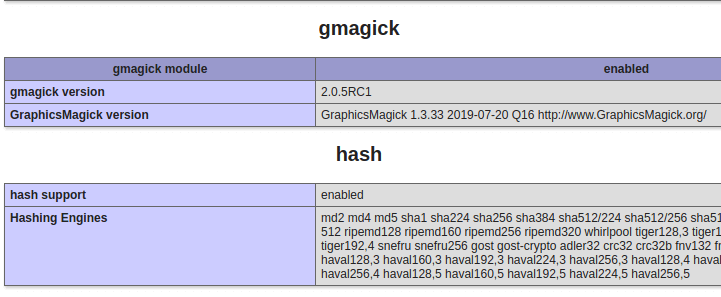

If you use any other PHP as a default make changes according to it. echo 'extensionimagick.so' > /etc/php.d/imagick. After finding the file, run this command: replace imagick.ini with your own filename.

You may find the file like 20-imagick.ini or 40-imagick.ini.
#YUM IMAGEMAGICK INSTALL#
Ln /usr/local/apps/php73/lib/extensions/no-debug-non-zts-20151012/imagick.so /usr/local/apps/php73/ext/imagick.soĪfter creating the link we need to activate the extension so we go to /usr/local/apps/php70/etc/php.d and edit the extra.ini file by adding this extension=imagick.so after adding the extension and saving the file, we go to webuzo panel and restart apache from “services”. sudo yum install php-pecl-imagick Then go to /etc/php.d folder and search for imagick.ini file. On the install, it will ask for prefix path, paste the path from (1a)Īfter this we need to create a link in this path /usr/local/apps/php73/ext, link name will be imagick.so with this path /usr/local/apps/php73/lib/extensions/no-debug-non-zts-20151012/imagick.so for my demo (check /usr/local/apps/php73/lib/extensions/ folder for the no debug folder name that applies on your case). sudo yum install -enablereporemi -y ImageMagick ImageMagick-devel. And now, we're going to install ImageMagick from Remi's repository. sudo yum install -y gcc php-devel php-pear. usr/local/apps/php73/bin/pecl install imagick Next, let's install ImageMagick's dependencies. Now we need to get PHP working with this extension so we do this command in ssh (using PHP 7.3 in this demo) The ImageMagick development package is required to build imagick PHP extension later. You might need to run yum install php-devel -y. If installed then run: /opt/cpanel/ea-php56/root/usr/bin/pecl. yum install ImageMagick -y yum install ImageMagick-devel -y yum install php-pear -y pecl install imagick -y.

(1a) path = this is where imagick will be installed /usr/include/ImageMagick OR /usr/bin/convert ImageMagick package is available from CentOS base YUM repository. First ensure you have imagick installed via yum: yum install ImageMagick ImageMagick-devel. To install Imagick open ssh as a root user and give this command :Īfter installing you need to know where it gets installed :


 0 kommentar(er)
0 kommentar(er)
